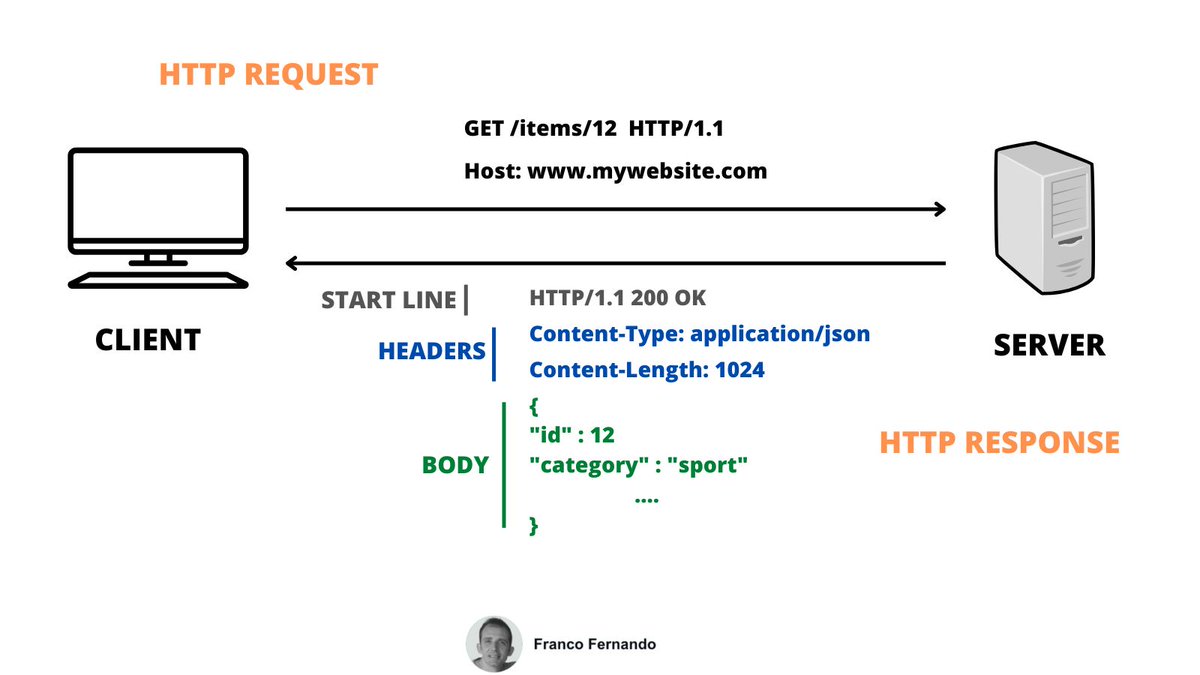Backend development is a challenging yet rewarding field.
If I had to start over again, these are the 7 steps I would take: ↓
If I had to start over again, these are the 7 steps I would take: ↓

1. Learn a programming language
To get a job in backend programming, you need to be good at writing code.
Python, C#, and Java are all popular backend programming languages.
You don't have to be good at all of them, though.
Pick a language and learn it well.
To get a job in backend programming, you need to be good at writing code.
Python, C#, and Java are all popular backend programming languages.
You don't have to be good at all of them, though.
Pick a language and learn it well.
2. Learn about server-side frameworks
Server-side frameworks are tools that help build the structure of any website.
They'll make the development process smoother and more efficient.
Popular frameworks are Flask (Python), Spring (Java), .NET Core (C#).
Server-side frameworks are tools that help build the structure of any website.
They'll make the development process smoother and more efficient.
Popular frameworks are Flask (Python), Spring (Java), .NET Core (C#).
3. Learn database management
Backend development involves a lot of work with databases.
A solid understanding of DBMS and how to set up and maintain a database is essential.
Learn the difference between SQL and NoSQL.
To begin, you can choose between PostgreSQL and MongoDB.
Backend development involves a lot of work with databases.
A solid understanding of DBMS and how to set up and maintain a database is essential.
Learn the difference between SQL and NoSQL.
To begin, you can choose between PostgreSQL and MongoDB.
4. Grasp Web Development Concepts
Backend development focuses on the server side,.
However, knowing about HTTP, HTML, CSS, and JavaScript is important.
They're the backbone of web application interaction.
Backend development focuses on the server side,.
However, knowing about HTTP, HTML, CSS, and JavaScript is important.
They're the backbone of web application interaction.
5. APIs
APIs enable software applications to talk to each other by setting up rules and protocols.
Get familiar with different styles of APIs like REST, RPCs, and GraphQL.
APIs enable software applications to talk to each other by setting up rules and protocols.
Get familiar with different styles of APIs like REST, RPCs, and GraphQL.
6. Cloud computing and tools
Learn how to use Azure, AWS, Google Cloud, or Vercel, as well as how to deploy in the cloud.
Also, you must be able to use a versioning system like Git well.
Learn how to use Azure, AWS, Google Cloud, or Vercel, as well as how to deploy in the cloud.
Also, you must be able to use a versioning system like Git well.
7. Practice a lot
There's no better way to retain notions than getting hands-on experience.
Building personal or community projects and contributing to open-source are all valuable ways.
Becoming a skilled backend developer is a journey of continuous learning and practice.
There's no better way to retain notions than getting hands-on experience.
Building personal or community projects and contributing to open-source are all valuable ways.
Becoming a skilled backend developer is a journey of continuous learning and practice.
• • •
Missing some Tweet in this thread? You can try to
force a refresh









